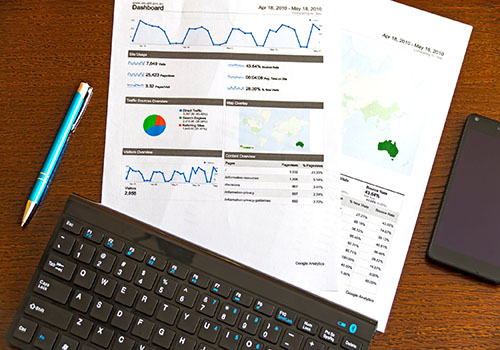Marketers wish they had a crystal ball that would allow them to peek into the future to see how their customers will behave and whether they’ll buy a product. Since that’s impossible, they have to settle for what is called Predictive Analytics. That’s when you take the data from past performance and use tools (such as data mining, modeling and even artificial intelligence) and analyze it to develop models that predict future performance. In a recent study, the research and advisory firm Forrester Research offered several guidelines for using Predictive Analytics.
Search for data from multiple sources. You need to look for data both internally (in places within your company like sales per month, average order values and customer type lifetime value) and externally (in places like social media dashboards, Google analytics and government reports) to develop trustworthy analytics.
Do the work. Once you’ve gotten data, make sure it’s usable. For example, take information from multiple sources and merge it together, making sure to get rid of duplicate entries and filling in any missing information. This can be a very exhaustive step in the process – typically taking up about three-quarters of the time spent on Predictive Analytics.
Create a model you can work with. There are plenty of statistical and machine learning algorithms out there, so you need to narrow your options to find one that works for you and your goals. You should develop internal key metrics that will help you determine what the predictions would be, analyzing a set of “training data” and “test data” to measure the success of the model.
Consider effectiveness and accuracy. Any predictive model should take into account that not all metrics will be 100% accurate. It’s about the probability that it can use past data and apply it to what current marketing strategies can be taken to impact future prediction of outcomes.
Act on your insights. Many companies might get to the point where they build a predictive analytics dashboard, but don’t trust the data when it doesn’t show the outcomes people were hoping to achieve. Failure also can happen if valuable team members were not included during the building of the model or not getting buy-in to continually update the data. You should trust insights from the team internally, as well as insights on what outcomes are key to using and building a predictive model.
Keep track of the success of your model. The old adage tells us “garbage in, garbage out.” The same is true for Predictive Analytics – a model won’t produce accurate results if the data put into it is faulty. That’s why it’s imperative you’re careful when preparing data for your model. You should make sure to create new variables and start with a clean dataset.
Of course, by its very nature, Predictive Analytics isn’t 100% accurate. You can’t account for unforeseen circumstances (and the word “predict” is right there in the title) but it does offer a lot of benefits. It’s been said that Predictive Analytics is kind of like when a football coach studies game films, using them to gain insight into what might happen in future contests. If a company incorporates what is learned from Predictive Analytics into their strategic marketing plan, it can translate into more sales. In fact, a 2015 survey conducted by Forrester found that organizations that use Predictive Analytics are nearly three times more likely to see revenue growth higher than the industry average compared with those which don’t use them.
Our prediction? You have more questions about Predictive Analytics and how they can be used to boost your sales.
Contact On Advertising today to learn more about how to incorporate Predictive Analytics into a digital marketing strategy for your company.






